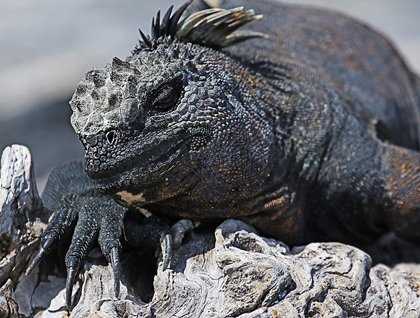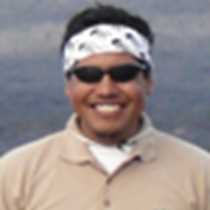Fernandina and Isabela Islands lie in the western region of the Galapagos. These islands are closest to the hot spot that created this archipelago, and they are still volcanically active. Evidence of this can be seen all around us, in the shape of lava flows and the majestic outline of the shield volcanoes that surround us this morning. Today’s early wakeup call invited us to go to the outside deck in order to look for marine wildlife activity.
Once we had anchored near Punta Espinosa, a small peninsula located in the northeast of Fernandina Island, we were ready to go ashore. Fernandina is one of the last pristine islands on the planet, and it holds one of the largest populations of marine iguanas in the Galapagos. When we started our hike, the marine iguanas were already basking in the morning sunshine, and we could not believe how many we saw. Another endemic inhabitant of this area is the flightless cormorant, and we were fortunate enough to observe many of them right next to our trail! The tidal pools of Punta Espinosa offer a safe home to a large group of Galapagos sea lion pups; they passed the time by playing together and climbing up and down the rocks while waiting for their mothers to return from feeding in the ocean. The lavas that we walked on were relatively new, and still retain the texture and shapes as when they cooled down, which can be either ‘pahoehoe’ or ‘aa’ type. After such an amazing visit, we had a chance to snorkel along this black, rocky shore. The area is highly productive and many marine species forage here, including the Pacific green sea turtles and the marine iguanas.
The morning was spectacular, but the amazing encounters continued during the afternoon as we navigated northwards to our next destination, Punta Vicente Roca on Isabela Island. We lowered our Zodiacs in order to fully explore this spectacular coastline. This area is the outer wall of a collapsed crater, and it is teaming with life. Here, we could observe a variety of species, including endemic Galapagos penguins, flightless cormorants, large-sized marine iguanas, Nazca boobies, Galapagos sea lions, brown noddy terns, and many more. To end a fantastic day, we celebrated the crossing of the equator line with a toast in the sundeck of the National Geographic Endeavour. We can hardly wait to find out what new experiences await us tomorrow!







